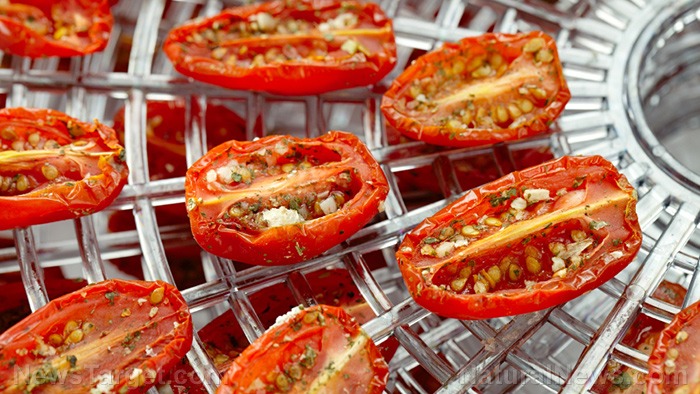
Stockpiling fresh produce and meat is a good way to ward off malnutrition and starvation in case SHTF, but if you don't preserve your food correctly, it might just end up going rancid. Preserve your food supply and ensure a reliable source of protein and nutrients by learning how to dry meats, fruits, and vegetables using a solar oven. (h/t to SurvivalSullivan.com.)
Because moisture leads to the growth of bacteria and spoilage, the point of drying food is to remove as much water in the food as possible. Solar drying is one of the most efficient methods of drying as it dries the food in a controlled environment, thereby preventing unnecessary exposure to the elements. Using a solar oven to maintain the proper heat and humidity greatly reduces the risk of contamination. (Related: Understanding how a solar oven works, and how to use it.)
Lean meats are the best types of meat for drying, especially when stripped of as much fat as possible. These meats include skinless turkey and chicken, rabbit, salmon, mutton, goat, and pork chops. Fruits and vegetables are actually easier to dry than meats due to their high sugar and acid content. Ideal fruits and vegetables for sun drying include tomatoes, peppers, onions, pumpkins, squash, apples, apricots, berries, cherries, currants, figs, grapes, peaches, pears, and plums.
How to dry meat with a solar oven
- Cut the meat into tiny cubes or strips and try to cut away as much fat as possible. This will help the meat to dry faster than larger chunks.
- Boil the meat for around five minutes to eliminate bacteria.
- Allow the meat to air dry completely.
- Place the meat into the solar oven.
- Place a meat thermometer inside the oven to monitor the temperature. Check the temperature every 20 to 30 minutes to ensure that it does not go lower than a minimum of 85 degrees Fahrenheit.
- Leave the door of the oven propped open by around two to five inches to enhance air circulation.
- Place a sheet of aluminum foil inside the oven to increase the temperature.
- If you can, cover the opening of the solar oven with a screen to avoid contact with insects or debris.
- Allow the meat to thoroughly dry until it has a leathery texture. Depending on the weather, the density and amount of meat, and the quality of the oven, it may take up to two days to dry the meat.
- Store your dried meat in vacuum sealed bags and keep them in a cool and dry place. If properly stored, your dried meat can last for several months.
How to dry fruits and vegetables with a solar oven
- Wash your fruits and vegetables in cold water.
- Remove any blemishes or bad parts of your produce. You can also remove the skin if you want.
- Evenly cut your fruits and vegetables into thin slices or small chunks to dry them quicker. Cut off the stems and remove any seeds or pits.
- Dip your produce in a solution of equal parts cold water and lemon juice. Allow it to soak for around five to 10 minutes to prevent brown spots from forming on your produce.
- Allow your fruit and vegetable slices to air dry.
- Place the slices inside the solar oven.
- Place a meat thermometer inside the oven to monitor the temperature. Check the thermometer every 20 to 30 minutes to ensure that it remains a consistent temperature of 85 degrees Fahrenheit.
- Leave the door of the oven propped open by around by at least an inch or an inch and a half to facilitate air circulation and avoid condensation inside the oven.
- To avoid contact with insect or debris, cover the this opening with a screen or cheesecloth.
- Turn the slices over once every hour.
- Allow the slices to thoroughly dry until they have a leathery and pliable consistency. Depending on the weather and the quality of the oven, it may take at least 10 hours to completely dry your fruits and vegetables.
- Store your dried produce in airtight containers and keep them in a cool and dry place. If preserved and stored properly, your dried produce can last for up to 12 months.
Learn more about food storage and preservation techniques by going to FoodStorage.com.
Sources include:
Please contact us for more information.





















